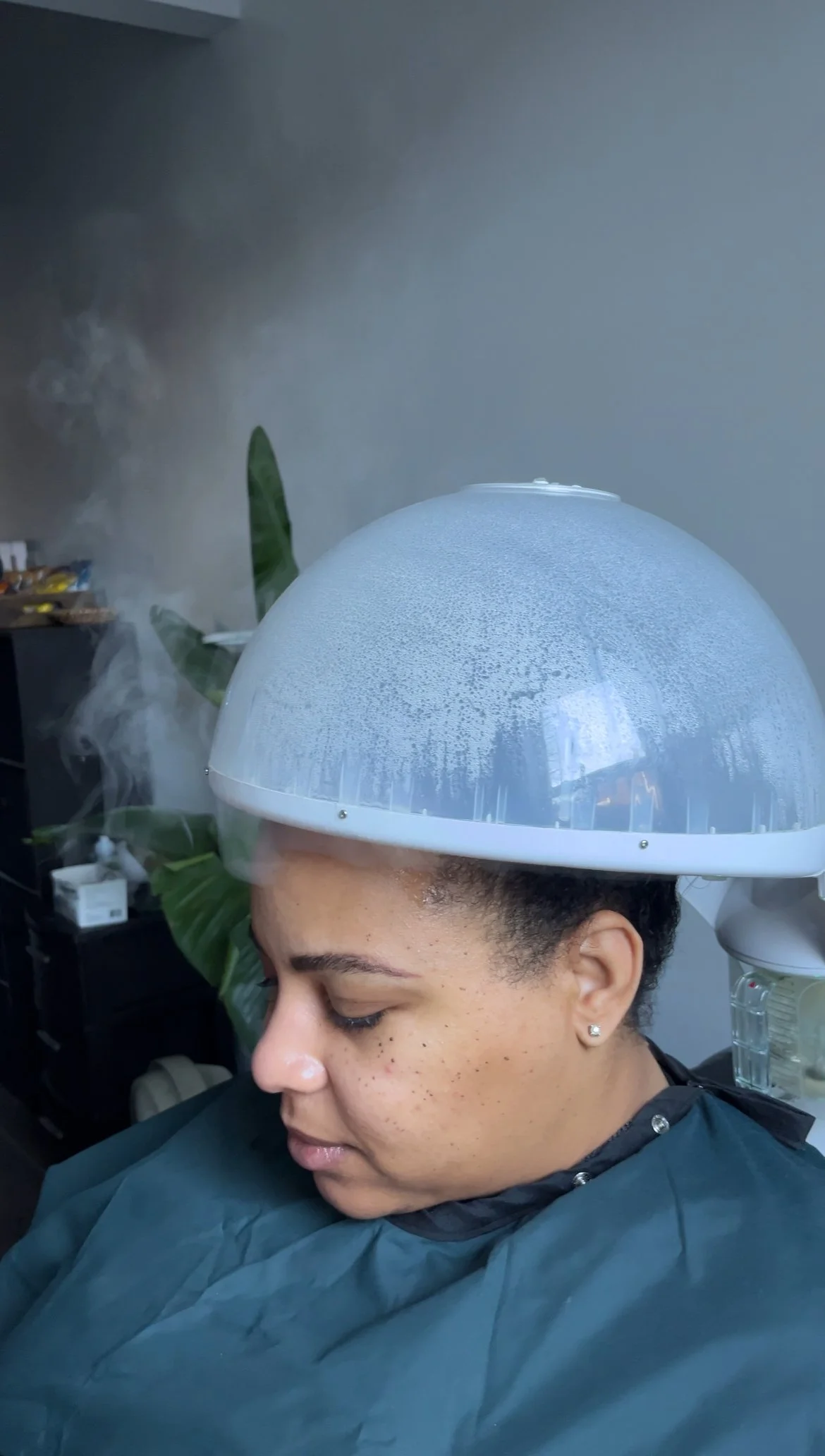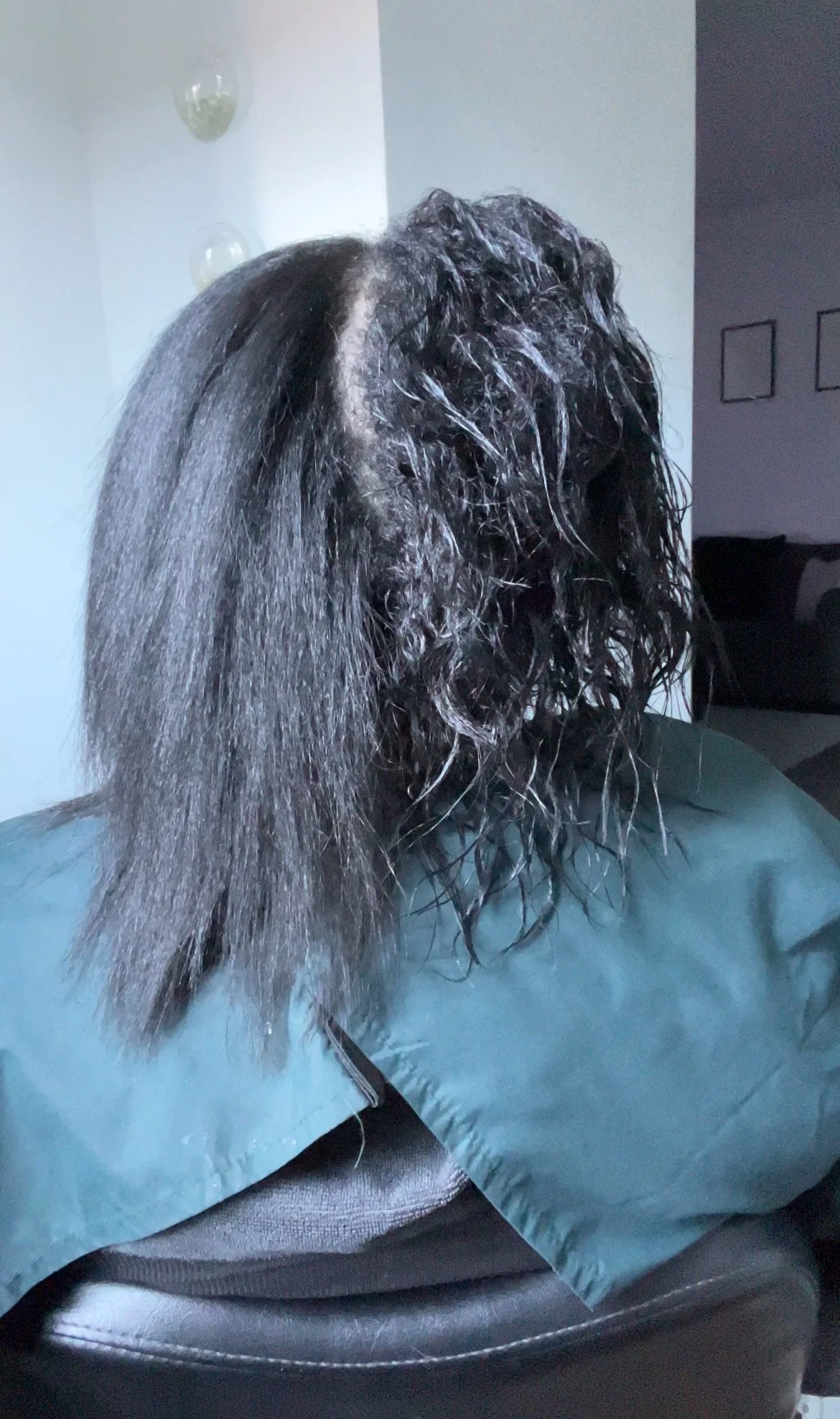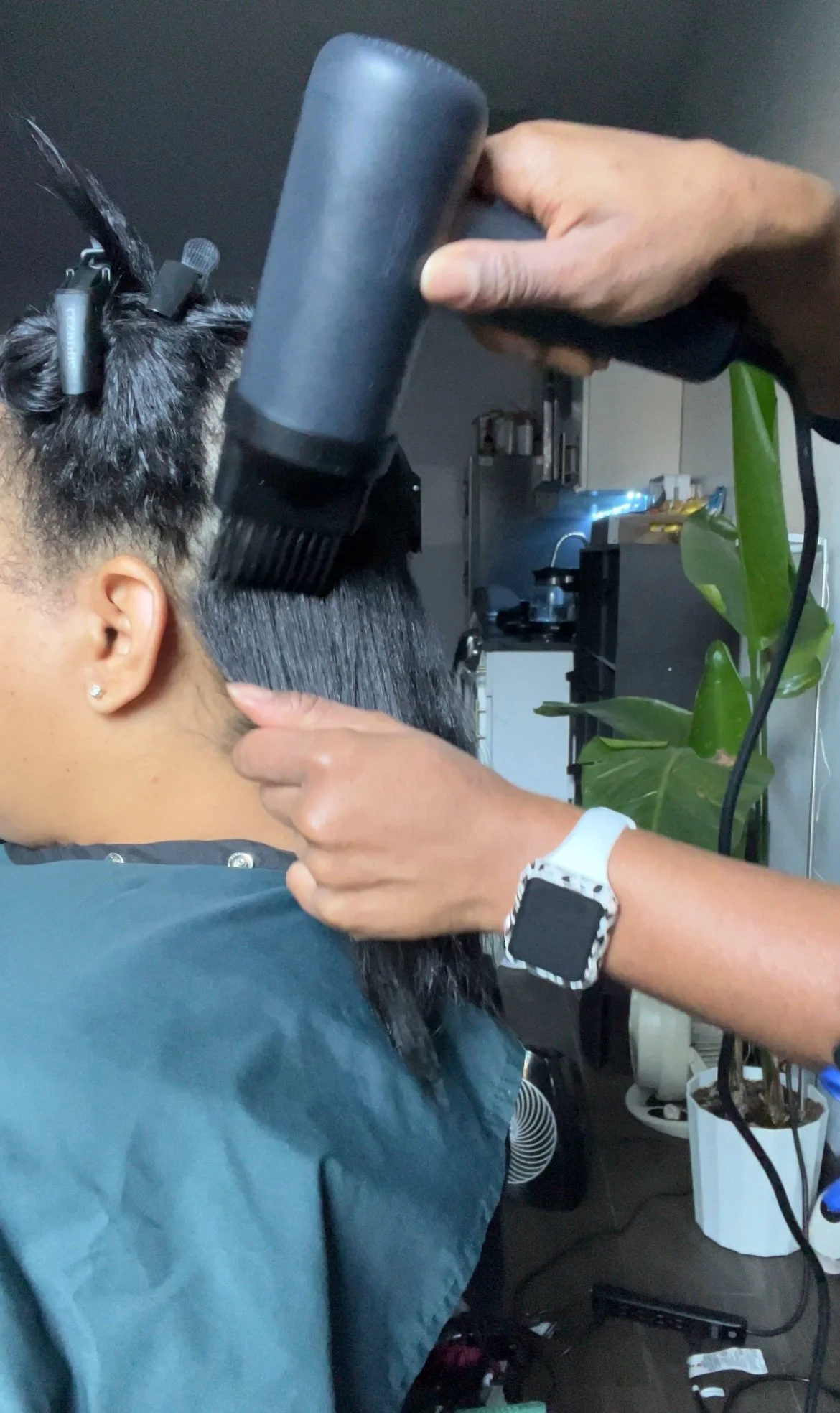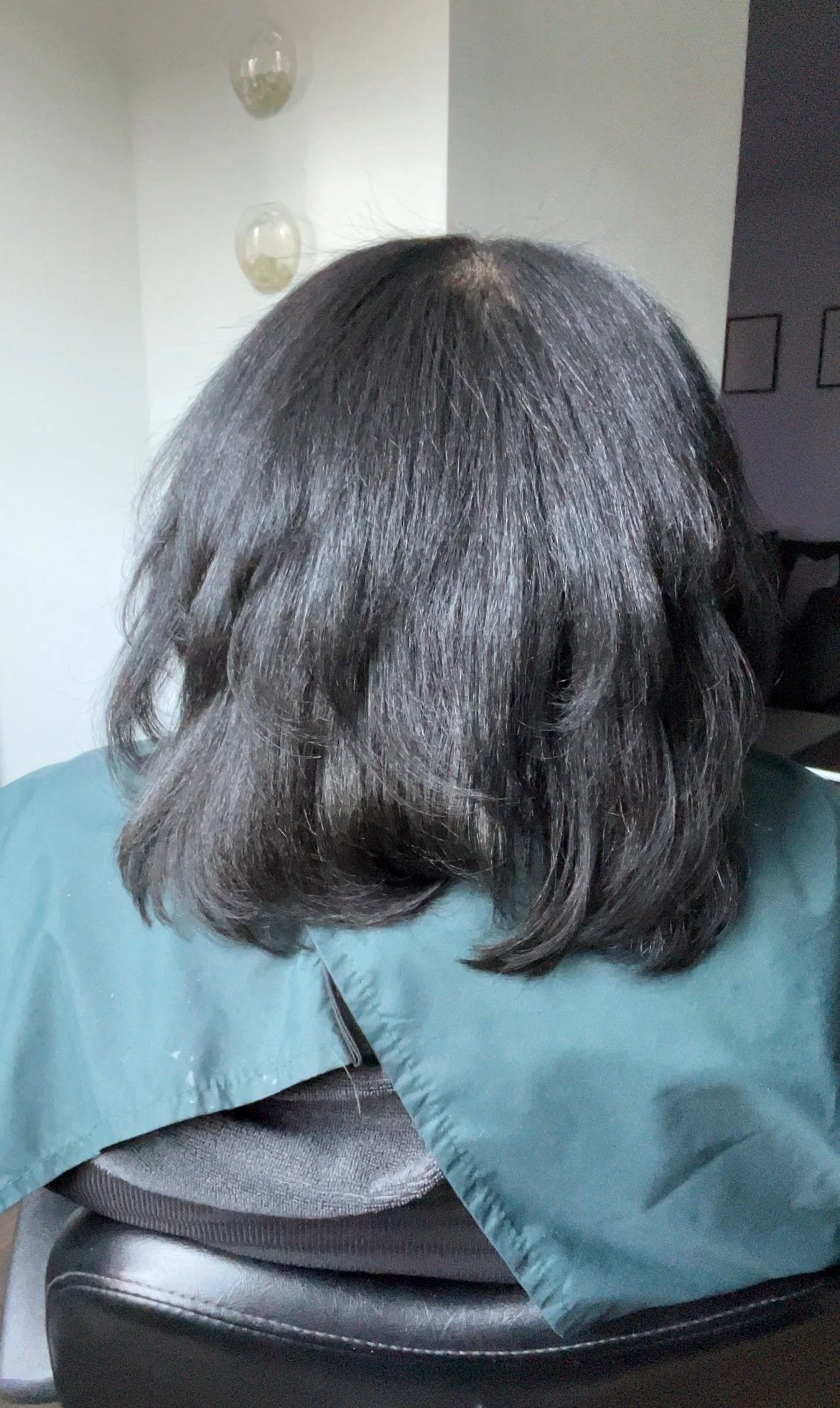Her Curls Were GONE... Here's What We Did Next
How to Transition from Chemically Straightened Hair Back to Natural Curls: Step-by-Step Guide
If you've chemically straightened your curly hair and now regret it, you're not alone. Many people find themselves with permanently straightened hair and wonder how to transition back to their natural curls without doing a big chop.
In this post, I’m walking you through exactly how I’m helping my client grow out her Japanese hair straightening treatment, using professional salon techniques and hair care products that you can use at home, too.
Let’s dive into the routine that will help you regain curl definition, reduce breakage, and support healthy hair growth… no matter where you’re starting from.
The Starting Point: Two Different Textures
My client came in with curly roots and permanently straight ends after getting a Japanese straightening treatment. Japanese straighteners are permanent. They break the disulfide bonds that define your curl pattern. That means those straight ends won’t curl again.
Her only options were:
Big chop (cut off all the straight ends)
Transition slowly and grow the curls back in
She chose to transition. Here's how we're doing it.
Step 1: Clarify the Scalp & Prep the Hair
Product Used: Clarifying Shampoo
Before any treatment, it's essential to remove product buildup and oils with a clarifying shampoo. A clean scalp creates a foundation for the next steps, especially when applying bond repair or protein treatments.
Step 2: Strengthen with a Bond Builder Treatment
Product Used: Olaplex Treatment
Olaplex is a bond-building treatment that works on a molecular level to reinforce your hair's internal structure . This is especially important after chemical services like relaxers or Japanese straighteners.
Why it works:
Reinforces weak hair bonds
Strengthens the fragile line of demarcation (where curly and straight textures meet)
Reduces breakage and shedding during detangling
Pro Tip: Pair it with a hair steamer for deeper penetration.
Step 3: Deep Steam for Moisture Boost
Tool Used: Hair Steamer
Steam is a game-changer for transitioning hair. It opens the hair cuticle so deep conditioners and treatments can fully absorb, especially in coarse or high porosity hair.
Benefits of steaming:
Increases moisture retention
Softens brittle textures
Protects against snapping at the line of demarcation
Step 4: Wash with a Moisture-Rich Shampoo
Product Used: Moisture Shampoo
You need a shampoo that’s hydrating but not heavy. This moisture shampoo cleans without stripping and is rich in coconut milk to help with breakage. Even with a creamier texture, it rinses clean, preventing buildup that causes dryness.
Step 5: Rebuild with a Protein Deep Conditioner
Product Used: Deep Repair Treatment
Transitioning hair is often keratin-depleted. This deep conditioner strengthens and moisturizes at once, thanks to keratin protein, which mimics your hair's natural structure.
Why it's ideal:
Restores strength and elasticity
Adds slip for detangling
Great for both thick and fine textures
Step 6: Leave-In Conditioner Is Non-Negotiable
Product Used: Emergency Miracle Treatment
Moisture is the name of the game when transitioning. A leave-in conditioner helps lock in hydration, makes styling easier, and reduces breakage during manipulation.
Tip: Always use a leave-in, whether styling curly or straight.
Step 7: Protect and Style with Blow-Dry Cream
Product Used: Le D
Unlike traditional serums, this creamy heat protectant adds moisture, slip, and softness to blowouts without leaving hair dry or crunchy.
Key benefits:
Adds heat protection
Keeps hair soft post-blow dry
Helps smooth rough cuticles
Step 8: Seal It All In with Lightweight Oil
Product Used: Amethyst Oil
This lightweight sealing oil protects the hair from heat styling while locking in all the moisture from your treatments. It absorbs quickly and won’t cause buildup, which is essential when managing two textures.
Use before flat ironing for extra shine and protection.
Why I Sometimes Recommend Straightening During Transition
Sounds surprising, right? But when done correctly, blow drying or silk pressing transitioning hair:
Unifies the texture temporarily
Makes detangling easier
Helps trim damaged ends more precisely
Teaches proper heat usage (low temp, protectants, limited frequency)
My clients have successfully grown out heat damaged and chemically treated hair while straightening weekly. The key is technique and protection.
Weekly Transitioning Hair Routine (At a Glance)
✅ Clarify once a month to prevent buildup
✅ Deep condition weekly or biweekly
✅ Always use a leave-in before styling
✅ Opt for low manipulation styles
✅ Avoid long term protective styles that dry out your hair
✅ Steam once a week for max hydration
Final Result: Shiny, Healthy, Transitioning Hair
Even though her curls are still growing in, my client’s hair looked moisturized, shiny, and strong. Transitioning doesn’t have to mean sacrificing style. When done correctly, your hair can thrive, even when in between two textures.
By following this routine and using salon quality products and moisture optimizing techniques, you can grow your curls back stronger than ever.















